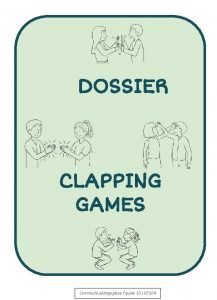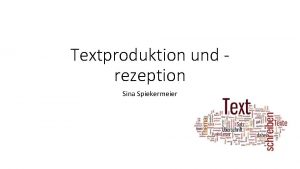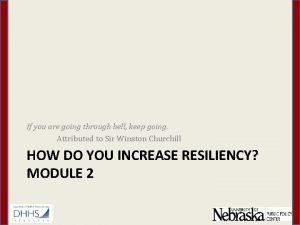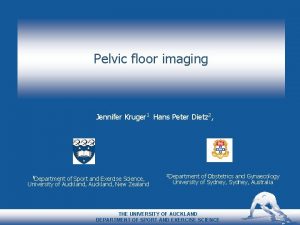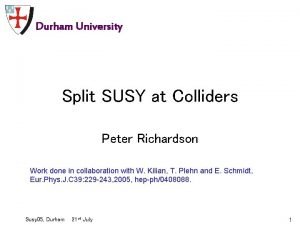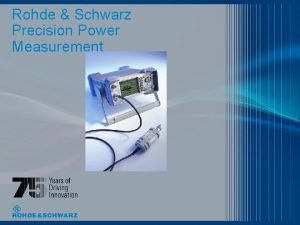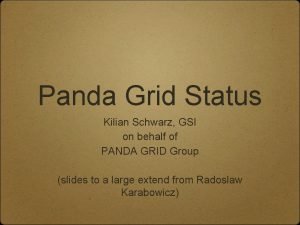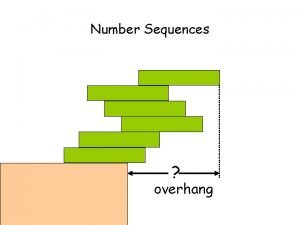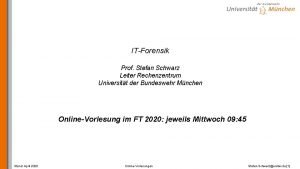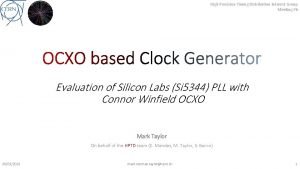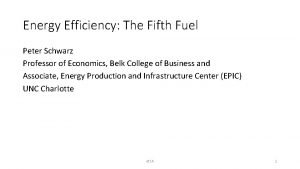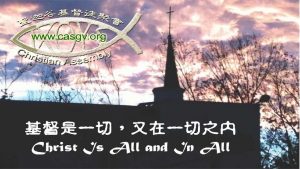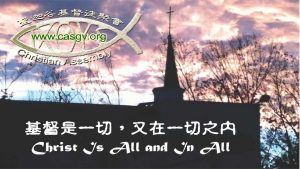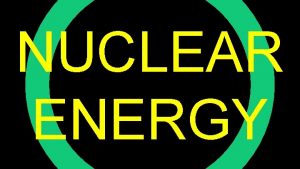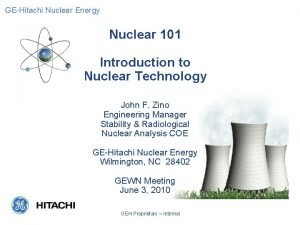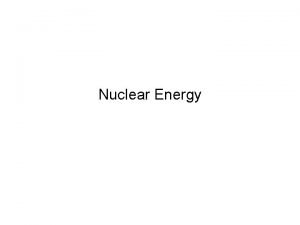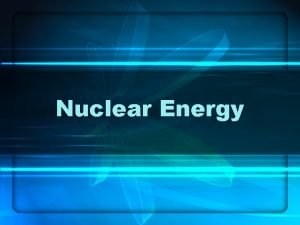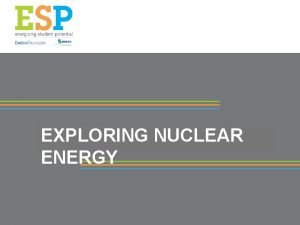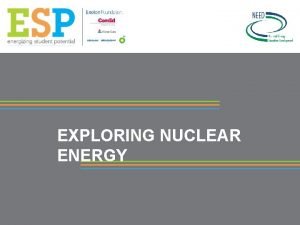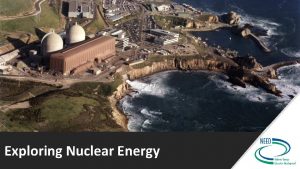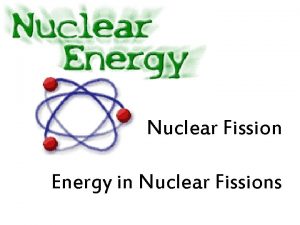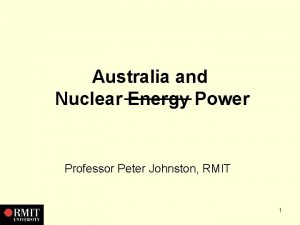Nuclear Energy Coming or Going Peter Schwarz Professor













- Slides: 13

Nuclear Energy: Coming or Going? Peter Schwarz Professor of Economics, Belk College of Business and Associate, Energy Production and Infrastructure Center (EPIC) UNC Charlotte of 13 1

Outline • Introduction • A Brief Economic History • Regulation • Private Cost • Social Cost of 13 2

Introduction (1) • Case for nuclear energy • Baseload power • 20% share of electricity generation in U. S. • Reliable • None of the emissions associated with fossil fuels • Energy security • 100 year supply • Similar for global supply • Static analysis appropriate given that today’s decision to use uranium has little impact on future availability of 13 3

Introduction (2) • Case against nuclear energy • Construction cost can exceed $10 billion • Ten or more years to build Reprocessing used in France • Large scale to minimize average cost • High levelized cost • Costs and size consistently exceed projections • Unique design characteristics • Ever-increasing safety requirements • Safety issues • High-level radioactive wastes • Remain active for 100, 000 years or more • No permanent solution • Yucca Mountain still being deliberated • Temporary solution: On-site storage of 13 U. S. banned in 1977. Fear of nuclear proliferation. Even though President Reagan lifted ban in 1981, we do not reprocess due to a combination of risk and high cost. 4

Brief Economic History (1) • Nuclear fission • 1917: Ernst Rutherford “split” the (nucleus of) the atom • Bombarded it with alpha particles • Occasionally dislodges a proton • Changes element • Energy released (E = mc 2) • Released neutrons start self-sustaining chain reaction • If uncontrolled, get explosion • 1942: Enrico Fermi produced first controlled self-sustaining reaction • Initial interest was bomb to end WW II. • 1946: Atomic Energy Commission established to look for peaceful uses. • 1953: “Atoms for Peace” • Nuclear submarines • 1957: First large-scale nuclear energy plant • Shippenport, PA of 13 U 235 used in nuclear reactors. As compared to U 238, it is easier to cause fission and the 5 release of energy.

Brief Economic History (2) • U. S. and globally (Japan, France, and other countries) • Rapid growth in 1960 s and especially beginning in 1973 in wake of rising oil costs. • Growing doubts about safety • What to do with spent fuel waste? • 1979: Three Mile Island partial meltdown. • No deaths or injuries • Nevertheless, led to a virtual moratorium on new plant construction. • Occurred 12 days after the movie, “The China Syndrome” (nominated for 4 Academy Awards). • 1986: Chernobyl: the most serious accident • Used a different technology than U. S. plants • No containment building • Not the same safety culture • Nevertheless, reinforced the fears about nuclear energy of 13 6

Brief Economic History (3) • 2000 s: Talk of nuclear renaissance • Increased attention to carbon emissions, climate change • 2005: U. S. Energy Policy Act • U. S. Department of Energy (DOE) offered incentives for new nuclear plants. • Advanced designs compared to 1960 s, 1970 s-era plants • 16 applications • Then came Great Recession • 2011 • Fukushima • Plant built in 1960 s. • Located by Pacific Ocean; nuclear plants require large quantities of cooling water. • Hadn’t been upgraded based on updated information • Regulatory capture (Recall Stigler (1971)) • Renaissance ends • Even if Japan’s experience unlikely elsewhere of 13 7

Brief Economic History (4) • Germany accelerates phase-out of nuclear energy • Subsidized renewables • Very costly • Returned to coal (lignite) • Now has some of highest electricity prices in the EU • Japan shuts down nuclear plants • Had accounted for 30% of electricity generation • High electricity prices even before Fukushima • Few energy reserves • Returning to nuclear energy • Deregulating its electricity industry of 13 8

Brief Economic History (5) • Fission vs. Fusion • Fission • Strength: No carbon, NOx, Sulfur emissions • Weakness: Possibility of radioactive release • If reactor core overheats • Ordinary (light) water reactor • Water moderater (slows the reaction) and coolant (keeps fuel from overheating). • Backup cooling system- Backup generator to provide power to cooling system. • Containment building to prevent radiation from escaping • Fusion • Fuse lighter elements together • Potentially produces much more energy than fission • But so far, energy required to initiate the reaction exceeds energy produced • Research ongoing at France’s ITER (International Thermonuclear Experimental Reactor) of 13 9

Brief Economic History (6) • Pressurized Water Reactor (PWR) vs. Boiling Water Reactor (BWR) • PBR most common in U. S. • Pressurized water reaches 300 degrees without boiling • Hot water pumped from reactor vessel to second water supply away from fuel source. • Hot water creates steam to spin turbine, drive generator, and produce electricity • Unused steam condensed back to water, recycled to create more heat • BWR • Higher thermal efficiency- only a single circuit • Reaction easier to control by monitoring water around core • Less radiation, fewer components • But requires larger reactor vessel because of larger amount of steam released in accident • Allows small amount of radiation to get into turbine system • Workers must wear protective clothing. • https: //www. clpgroup. com/nuclearenergy/Eng/power 4_1_ of 13 2. aspx 10

Regulation (1) • Origins of nuclear energy with government, not market • Find peaceful uses to justify continued research • Nuclear submarines • 1957: Shippenport, PA, First large-scale nuclear plant owned by U. S. DOE • Operated by Duquesne Power and Light, a private company • U. S. Atomic Energy Commission (1946) • Charged with regulating and promoting civilian commercial uses • Inherent conflict (Recall Stigler (1971) (Capture) Theory of Regulation) • 1957 Price-Anderson Nuclear Industries Indemnity Act • Limited liability of nuclear operators in event of an accident • 1975: Nuclear Regulatory Commission (NRC) succeeds AEC • Concerns about cozy industry-regulator relationship continue. • 2005: Extension of Price Anderson, loan guarantees, production tax credits of 13 11

Regulation (2) • Spent Fuel • 1982 Establishment of Nuclear Waste Policy Act to identify permanent waste site • Beginning in 1983, electric utilities contribute 0. 1 cent/k. Wh (paid by consumers) • Towards establishment of permanent waste site • $75 billion collected • Some spent on site preparation of Yucca Mountain • Obama (with urging by Senate Majority Leader Harry Reid) abandoned project in 2010 • In 2013, fee suspended since no prospects for permanent site. In what state is Yucca Mountain? Hint? What state did Harry Reid represent? of 13 12

Regulation (3) • Spent Fuel (cont. ) • Temporary sites • Spent fuel rods stored at reactor sites in lined concrete pools reinforced with steel rods. • As pools reach capacity, utilities move some of the older spent fuel to dry casks. • U. S. NRC originally pronounced method safe for 30 years. • Recently extended it to 60 years. • Reprocessing • Used in France, where nuclear accounts for about 75% of energy used to generate electricity. • Only a small fraction of uranium used to generate electricity is spent. • Recycle and use again (closed loop) • In U. S. , President Ford suspended and President Carter banned reprocessing • Fear that separated plutonium would fall into wrong hands. • Currently makes little economic sense as long as price of uranium remains low. Mixed-Oxide (MOx fuel) Mix of plutonium and uranium. Plant under construction. Savannah River Site, Georgia of 13 13 Multiple cost overruns, time delays.
 Tic tac toe going high going low going criss cross lollipop
Tic tac toe going high going low going criss cross lollipop Peter fox schwarz zu blau text
Peter fox schwarz zu blau text Lesson 15 nuclear quest nuclear reactions
Lesson 15 nuclear quest nuclear reactions Fisión nuclear vs fision nuclear
Fisión nuclear vs fision nuclear Promotion from assistant to associate professor
Promotion from assistant to associate professor If you are going through hell, keep going
If you are going through hell, keep going Jennifer kruger
Jennifer kruger Professor peter richardson
Professor peter richardson Nrpz
Nrpz Kilian schwarz
Kilian schwarz Proof of am gm inequality
Proof of am gm inequality Satz von schwarz thermodynamik
Satz von schwarz thermodynamik Unibw rechenzentrum
Unibw rechenzentrum Fswp8
Fswp8
